Ludwig van Beethoven’s Moonlight Sonata, formally titled Piano Sonata No. 14 in C-sharp minor, Op. 27, No. 2, is a timeless masterpiece renowned for its dreamy, evocative quality. Composed in 1801, it consists of three movements, each conveying profound emotion, making it a beloved piece among pianists and music enthusiasts worldwide.
Overview of the Sonata
Beethoven’s Moonlight Sonata, or Piano Sonata No. 14 in C-sharp minor, Op. 27, No. 2, is a three-movement work composed in 1801. Its dreamy, introspective first movement, marked Adagio sostenuto, features a hauntingly beautiful melody that has captivated listeners. The second movement, Allegretto, is lively and contrasting, while the third, Presto agitato, is dramatic and technically demanding. The sonata’s emotional depth and technical challenges make it a cornerstone of piano repertoire, with its sheet music widely available as a PDF for study and performance.
Historical Significance
Beethoven’s Moonlight Sonata, composed in 1801 and published in 1802, holds profound historical significance as a pivotal work in the transition between the Classical and Romantic eras. Dedicated to Countess Julie “Giulietta” Guicciardi, it reflects Beethoven’s emotional depth and innovative compositional style. The sonata’s nickname, “Moonlight,” emerged in the 1830s, inspired by a critic’s description of the first movement as resembling moonlight on water. This piece not only showcased Beethoven’s technical mastery but also his ability to evoke powerful emotions, making it a cornerstone of piano repertoire and a testament to his enduring legacy.
Popularity and Cultural Impact
Beethoven’s Moonlight Sonata has captivated audiences for centuries, becoming a cultural icon and a symbol of musical genius. Its dreamy, evocative quality has made it a favorite in literature, film, and popular media. The sonata’s enduring appeal lies in its ability to evoke deep emotions, transcending time and genres. It has inspired countless adaptations, from classical performances to modern EDM remixes, showcasing its timeless relevance. The Moonlight Sonata’s influence extends beyond music, shaping cultural narratives and remaining a cornerstone of artistic expression, continuing to inspire new generations of musicians and audiences alike.
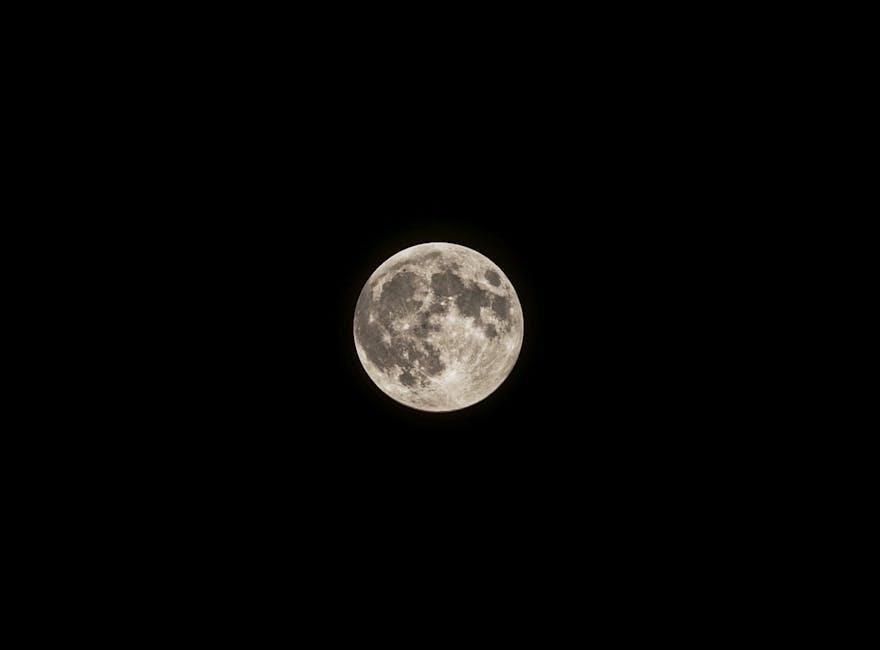
Structure of the Moonlight Sonata
The Moonlight Sonata consists of three movements: Adagio sostenuto, Allegretto, and Presto agitato. Each movement showcases Beethoven’s mastery of emotional depth and technical complexity, captivating pianists and audiences alike.
First Movement: Adagio Sostenuto
The first movement of the Moonlight Sonata, marked Adagio sostenuto, is renowned for its dreamy, contemplative quality; It begins with a gentle, flowing arpeggio in the right hand, accompanied by deep, resonant bass notes in the left, creating a sense of floating in moonlight. This movement is characterized by its lyrical melody and gradual dynamic shifts, building emotional intensity while maintaining a serene atmosphere. The nickname “Moonlight” was inspired by a poet’s description of the piece as evoking a boat gliding under a moonlit sky. Its haunting beauty and technical simplicity make it a favorite among pianists and listeners alike.
Second Movement: Allegretto
The second movement, marked Allegretto, offers a stark contrast to the first with its lively, almost scherzo-like character. Composed in D-flat major, it features a rhythmic, dance-like theme that exudes joy and energy. The movement is structured in a straightforward ternary form, with a central trio section that provides a moment of calm before returning to the lively scherzo. Its technical demands, including arpeggiated chords and precise timing, make it a delightful yet challenging piece for pianists. This movement balances the dramatic first and third movements, showcasing Beethoven’s mastery of contrasts and emotional depth.
Third Movement: Presto Agitato
The third movement, marked Presto Agitato, is a turbulent and dramatic finale that contrasts sharply with the first two movements. Composed in C-sharp minor, it features rapid arpeggiated chords and intense dynamics, creating a sense of urgency and emotional turmoil. The movement’s technical demands are significant, requiring precise finger dexterity and control. Its dramatic climax and resolution showcase Beethoven’s mastery of musical storytelling, leaving a lasting impression on listeners. This movement is often seen as a reflection of Beethoven’s inner struggles and emotional depth, making it a powerful conclusion to the sonata.
Historical Background
Composed in 1801, Beethoven’s Moonlight Sonata was dedicated to Countess Julie “Giulietta” Guicciardi. The nickname “Moonlight” emerged from a critic’s description of the first movement’s dreamy, moonlit quality, reflecting Beethoven’s emotional depth and innovative composition style during his early creative period.
Composition and Dedication
Beethoven composed the Moonlight Sonata in 1801, dedicating it to Countess Julie “Giulietta” Guicciardi, a young aristocrat and one of his piano students. The sonata, marked Quasi una fantasia, reflects Beethoven’s emotional turmoil during this period, as he grappled with his increasing hearing loss. The dedication to Guicciardi highlights the personal connection and romantic feelings Beethoven harbored for her. This sonata, part of his Op. 27 collection, showcases his innovative approach to piano composition, blending introspective melodies with dramatic contrasts. Its availability in PDF format today allows pianists to explore its intricate details and emotional depth.
The Origin of the Nickname “Moonlight”
The nickname “Moonlight Sonata” was coined by the German music critic and poet Ludwig Rellstab in the 1830s. He likened the first movement’s dreamy, flowing quality to a boat gliding under moonlight on Lake Lucerne. Although Beethoven did not approve of the name, it gained popularity and has since become synonymous with the piece. The sonata’s evocative nature, particularly in its opening movement, continues to inspire such poetic interpretations. Today, pianists exploring the PDF score can delve into the intricate details that evoke this timeless imagery.
Beethoven’s Inspiration and Creative Process
Beethoven’s inspiration for the Moonlight Sonata is often linked to his personal experiences and emotional turmoil. Composed during a period of significant change, including his growing deafness, the sonata reflects his inner struggles and artistic evolution. The piece was dedicated to his pupil, Countess Julie “Giulietta” Guicciardi, who may have been a romantic interest. Beethoven’s creative process was marked by intense focus and innovation, as he pushed the boundaries of classical music. The PDF score reveals intricate details of his compositional genius, offering pianists a window into his revolutionary approach to harmony and structure.
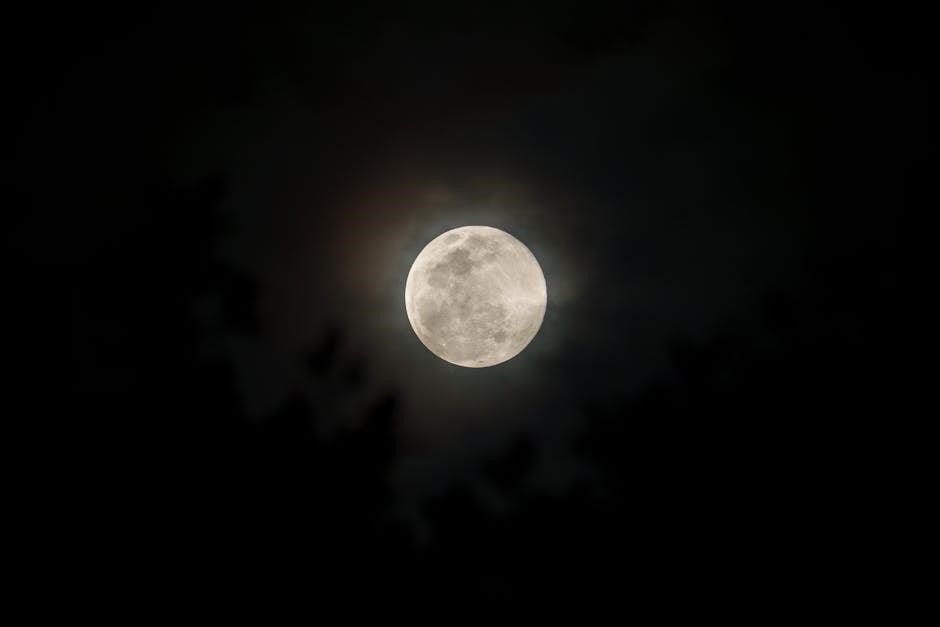
The Piano Score and PDF Resources
The Moonlight Sonata’s piano score is widely available in PDF format, offering detailed notation for pianists. These resources provide access to Beethoven’s original composition, enabling precise interpretation and practice.
Availability of Sheet Music
The Moonlight Sonata’s sheet music is widely available in PDF format, offering both free and paid options. Many classical music websites provide high-quality scores, while platforms like MuseScore and IMSLP host downloadable versions. The PDFs typically include the full sonata, with detailed dynamics, tempo markings, and fingerings. Some editions also offer interpretations by renowned pianists, enhancing the learning experience. Additionally, music schools and libraries often provide access to these resources, making it easy for pianists of all levels to study and perform this iconic piece.
Features of the Piano PDF
The Moonlight Sonata piano PDF offers high-quality sheet music with clear notation and precise dynamics. It includes detailed fingerings, tempo markings, and expressive instructions, ensuring authenticity. The PDF is often formatted for easy readability, with large notes and proper spacing. Many versions include performance notes and historical context, enhancing the musical experience. Some editions also feature interpretations by renowned pianists, providing valuable insights. The PDFs are compatible with various devices, making them accessible for practice and performance. This ensures that pianists can accurately interpret Beethoven’s emotional and technical masterpiece.
Best Sources for Downloading the Score
Reputable sources for downloading the Moonlight Sonata piano PDF include the International Music Score Library Project (IMSLP), Musicnotes, and Sheet Music Plus. These platforms offer high-quality, accurate scores, often with multiple editions to choose from. Some versions are free, while others require purchase, ensuring access for both amateur and professional pianists. Additionally, sites like Piano Nanny and Piano Marvel provide interactive PDFs with performance tips. These sources are trusted for their reliability and authenticity, making them ideal for musicians seeking precise and expressive interpretations of Beethoven’s masterpiece.
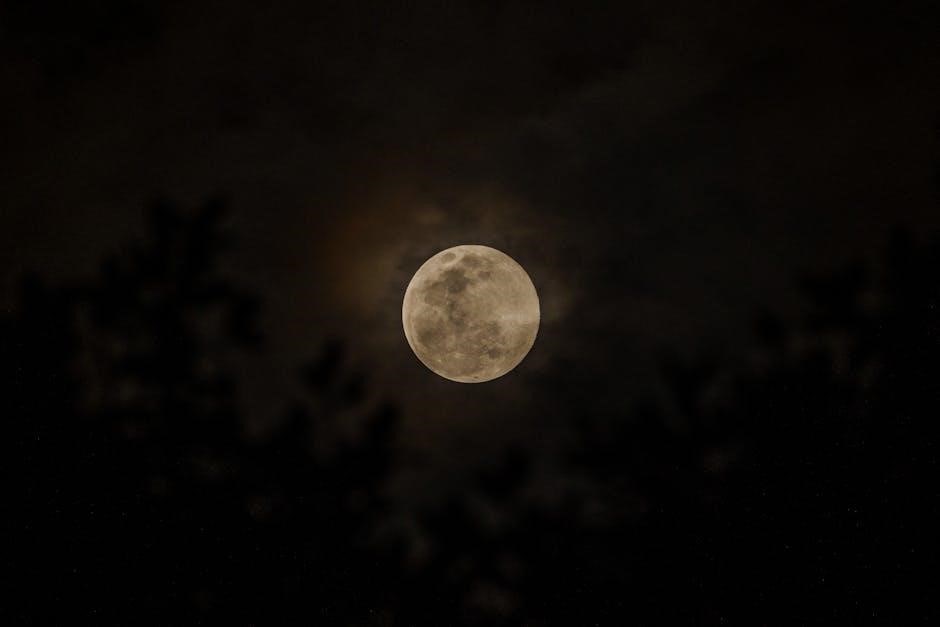
Performance and Interpretation
The Moonlight Sonata demands nuanced interpretation, balancing technical precision with emotional depth. Pianists must master its flowing arpeggios and dramatic contrasts, capturing Beethoven’s intended passion and complexity.
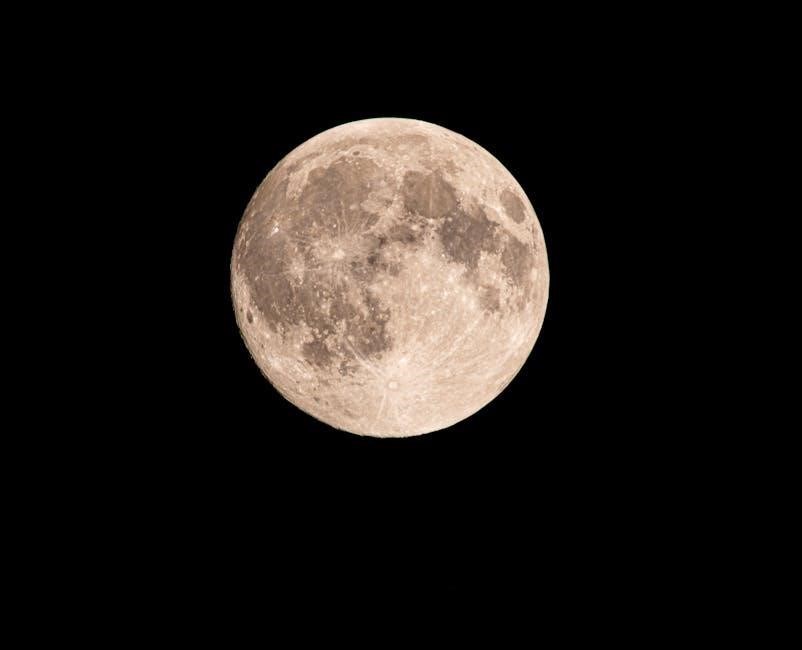
Technical Challenges for Pianists
The Moonlight Sonata presents significant technical challenges, particularly in the first movement’s flowing arpeggios, which require precise finger dexterity and control. The left-hand accompaniment must remain soft and legato, while the right-hand melody demands a singing, lyrical quality. Dynamic contrasts and pedaling techniques add complexity, as pianists must balance clarity with expression. The third movement’s rapid tempo and intricate fingerings further test a pianist’s technical prowess, making it a piece that requires both mastery and interpretive sensitivity to perform effectively.
Emotional Depth and Expression
The Moonlight Sonata is celebrated for its profound emotional depth, with each movement evoking distinct feelings. The first movement’s dreamy, contemplative nature creates a sense of introspection, while the second movement’s lively rhythm brings joy and lightness. The third movement’s dramatic turbulence and intensity convey a stormy, almost chaotic emotion. Beethoven’s masterful use of dynamics, tempo, and harmonic shifts allows pianists to express a wide range of emotions, making the sonata a deeply personal and expressive experience for both performer and listener.
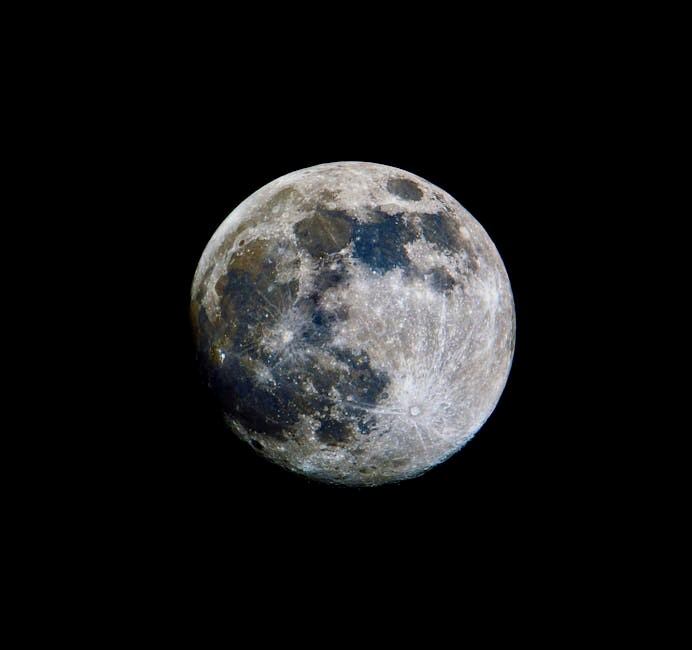
Famous Performances and Recordings
The Moonlight Sonata has been performed by countless pianists, each bringing their unique interpretation. Notable recordings include those by Lang Lang, whose technical brilliance shines, and Yuja Wang, known for her expressive depth. Lionel Yu’s 2022 EDM remix introduced the sonata to a new audience, blending classical and modern elements. These performances highlight the piece’s versatility and enduring appeal, showcasing its ability to transcend traditional boundaries and connect with diverse listeners across generations and genres.
The Sonata’s Emotional and Musical Significance
Beethoven’s Moonlight Sonata captivates with its emotional depth and musical complexity, offering a timeless appeal that resonates deeply with listeners, reflecting the composer’s inner turmoil and artistic genius.
The Dreamy and Contemplative First Movement
The first movement, Adagio sostenuto, is renowned for its dreamy, contemplative quality. Its slow, spiraling chords in the right hand and deep, sinking bass in the left create a mesmerizing atmosphere. This movement, often described as evocative and introspective, has captivated listeners with its serene yet profound emotional depth. The nickname “Moonlight” originates from a poet’s comparison of the piece to a boat floating under moonlight, further enhancing its ethereal charm. It remains one of the most beloved and recognizable piano pieces, embodying Beethoven’s unique ability to convey deep emotion through music.
The Joyful and Lively Second Movement
The second movement, marked Allegretto, offers a stark contrast to the first with its lively, almost dance-like rhythm. Its bright, cheerful melody, played in a triplet pattern, creates a sense of joy and vitality. This movement, often described as a scherzo, showcases Beethoven’s ability to craft music that is both technically challenging and emotionally uplifting. The trio section adds depth, balancing the lively outer themes. This movement provides a refreshing contrast to the introspective first movement, highlighting Beethoven’s mastery of dynamic emotional shifts within a single work.
The Turbulent and Dramatic Third Movement
The third movement, marked Presto Agitato, is a dramatic and turbulent finale that contrasts sharply with the first two movements. Its rapid tempo and intense dynamics create a sense of urgency and passion. The movement features dramatic arpeggios, sudden key changes, and a relentless rhythmic drive, showcasing Beethoven’s mastery of dramatic expression. Pianists face significant technical challenges, including intricate fingerwork and dynamic contrasts. This movement encapsulates the emotional turmoil often associated with Beethoven’s music, leaving listeners with a profound and lasting impression of its sheer power and intensity.

Beethoven’s Piano Sonatas in Context
Beethoven’s piano sonatas, including the Moonlight Sonata, revolutionized the genre with their innovative structures and emotional depth, setting a new standard for future composers and pianists alike.
The Role of the Moonlight Sonata in Beethoven’s Catalog
The Moonlight Sonata, as part of Beethoven’s Op. 27 set, stands as a pivotal work in his catalog, showcasing his early innovative approach to sonata structure. It contrasts dramatically with its companion piece, Op. 27, No. 1, and is often regarded as a bridge between his earlier classical style and the more expressive, romantic compositions that followed. The sonata’s dreamy, introspective first movement and dramatic third movement highlight Beethoven’s ability to evoke powerful emotions, solidifying its place as one of his most celebrated works and a cornerstone of his piano repertoire.
Comparison with Other Sonatas
Beethoven’s Moonlight Sonata stands distinct among his sonatas, offering a unique blend of emotional depth and structural innovation. Unlike the fiery Appassionata or the technically demanding Hammerklavier, the Moonlight Sonata captivates with its introspective and dreamy qualities. Its first movement, with its shimmering arpeggios, contrasts sharply with the dramatic intensity of other sonatas, while its third movement’s turbulent energy showcases Beethoven’s mastery of dynamic contrasts. This duality makes the Moonlight Sonata a fan favorite, balancing accessibility with complexity, and solidifying its place as one of Beethoven’s most beloved and recognizable works.
Evolution of Beethoven’s Compositional Style
Beethoven’s compositional style evolved significantly throughout his career, transitioning from classical traditions to romantic innovation. Early sonatas, like Op. 2, reflect Haydn’s influence, while later works, such as the Moonlight Sonata, showcase his unique voice. The sonata’s dreamy, expressive qualities and unconventional structure marked a departure from traditional sonata form. This shift highlighted Beethoven’s growing emphasis on emotional depth and structural innovation, setting the stage for his groundbreaking later works. His style continued to expand, blending dramatic contrasts with lyrical beauty, cementing his legacy as a bridge between classical and romantic music.
Modern Interpretations and Remixes
Beethoven’s Moonlight Sonata has inspired modern artists, with electronic dance music (EDM) remixes by pianists like Lionel Yu, blending classical elegance with contemporary beats, captivating new audiences.
Electronic Dance Music (EDM) Remixes
The Moonlight Sonata has been reimagined in electronic dance music (EDM) by artists like Lionel Yu, blending Beethoven’s timeless melodies with modern beats and synths. These remixes retain the piece’s emotional depth while introducing it to new audiences in nightclubs and digital platforms. Yu’s 2022 remix, for instance, combines the sonata’s iconic opening with pulsating rhythms, creating a fresh yet respectful interpretation. Such adaptations highlight the sonata’s versatility and enduring appeal, proving its ability to transcend classical boundaries and resonate with contemporary listeners.
Contemporary Performances and Arrangements
Contemporary pianists and artists continue to reinterpret the Moonlight Sonata in innovative ways, blending traditional techniques with modern styles. Performances often emphasize the piece’s emotional depth, while arrangements range from orchestral versions to collaborations with electronic artists. These interpretations not only preserve the sonata’s legacy but also introduce it to new generations. The piece’s versatility allows it to thrive in diverse settings, from classical concert halls to experimental multimedia productions, ensuring its enduring relevance in today’s musical landscape.
The Sonata’s Influence on Modern Music
The Moonlight Sonata has profoundly influenced modern music, inspiring countless adaptations and reinterpretations; Its haunting melodies and emotional depth have been incorporated into various genres, from electronic dance music (EDM) to film scores. Artists like Lionel Yu have remixed the sonata into vibrant EDM tracks, introducing it to new audiences. Additionally, its themes are often sampled in contemporary compositions, showcasing its timeless appeal. This blending of classical and modern styles highlights the sonata’s enduring relevance, ensuring its legacy continues to evolve and captivate listeners across generations and musical boundaries.

Learning the Moonlight Sonata
Mastering Beethoven’s Moonlight Sonata requires dedication and practice. The piano PDF score is widely available, offering detailed notation for pianists to study and perform this iconic piece.
Tips for Beginner Pianists
Beginners tackling Beethoven’s Moonlight Sonata should start with the first movement, focusing on slow, deliberate practice to master the flowing arpeggios. Use a metronome to maintain tempo and emphasize dynamic contrasts. Break the piece into smaller sections, practicing hands separately before combining them. Pay attention to finger placement and pedaling techniques to achieve the desired dreamy effect. Seek tutorials or a teacher for guidance on challenging passages. Regular, short practice sessions will help build confidence and technique, ensuring a smooth progression through this iconic piece.
Advanced Techniques for Experienced Players
Experienced pianists can refine their interpretation of the Moonlight Sonata by focusing on nuanced dynamics and expressive phrasing. Mastering the subtle rubato in the first movement enhances its dreamy quality, while precise pedaling techniques preserve clarity. Emphasize dramatic contrasts in the third movement’s Presto Agitato, balancing technical precision with emotional intensity. Attention to articulation and touch will highlight the piece’s intricate textures. Exploring historical performance practices can also deepen interpretation, allowing advanced players to convey the sonata’s profound emotional depth while maintaining technical brilliance.
Practice Strategies for Mastering the Piece
Mastering Beethoven’s Moonlight Sonata requires disciplined practice. Start by breaking the piece into sections, focusing on challenging passages like the first movement’s slow, lyrical arpeggios and the third movement’s rapid, turbulent scales. Use slow practice to build accuracy, gradually increasing tempo. Incorporate metronome work to ensure precise timing. Pay attention to dynamics and pedaling, as these elements are crucial for conveying the sonata’s emotional depth. Regularly review the score to refine articulation and phrasing. Consistent, focused practice will help pianists achieve a polished, expressive performance.

Cultural and Literary References
Beethoven’s Moonlight Sonata has inspired countless literary and cinematic works, often symbolizing romance, mystery, or introspection. Its dreamy melodies frequently appear in films and novels to evoke emotional depth.
The Sonata in Literature and Film
Beethoven’s Moonlight Sonata has captivated authors and filmmakers, often symbolizing romance, mystery, or introspection. In literature, it frequently appears as a metaphor for emotional depth, while in film, its haunting melodies set the tone for dramatic or romantic scenes. The sonata’s dreamy quality has inspired countless adaptations, making it a cultural icon. Its presence in media underscores its timeless appeal, bridging music and storytelling to evoke powerful emotions in audiences worldwide.
Its Role in Shaping Musical Culture
Beethoven’s Moonlight Sonata has profoundly influenced musical culture, redefining the piano sonata genre with its emotional depth and innovative structure. Its dreamy, contemplative quality inspired Romantic-era composers like Chopin and Liszt, shaping the direction of classical music. The sonata’s enduring popularity is evident in its frequent performance and adaptation, ensuring its relevance in contemporary music. It remains a cornerstone of classical music, continuing to inspire generations of musicians and composers, solidifying its legacy as a timeless masterpiece.
Symbolism and Interpretation in Popular Media
Beethoven’s Moonlight Sonata has become a cultural icon, often symbolizing introspection and emotional depth in films, literature, and media. Its haunting melodies evoke imagery of moonlit nights, inspiring poetic interpretations. The sonata’s dreamy quality has been used in various contexts, from romantic scenes in movies to symbolic representations in literature. Its adaptability has led to modern reinterpretations, such as EDM remixes, further cementing its influence. The sonata’s universal appeal continues to inspire creative expressions, making it a timeless symbol of musical and emotional expression across genres and generations.

The Moonlight Sonata’s Legacy
The Moonlight Sonata’s enduring appeal and influence on future composers ensure its continued relevance in the digital age, solidifying its legacy as a timeless masterpiece.
Its Enduring Appeal
Beethoven’s Moonlight Sonata remains a timeless masterpiece, captivating audiences with its dreamy, evocative quality. Its emotional depth and technical complexity make it a favorite among pianists and music lovers alike. The sonata’s ability to evoke vivid imagery and introspection has solidified its place in classical music history. Its adaptability to various interpretations and arrangements ensures its relevance across generations. From classical performances to modern remixes, the Moonlight Sonata continues to inspire and influence musicians and composers, maintaining its enduring appeal in an ever-evolving musical landscape.
Impact on Future Composers
Beethoven’s Moonlight Sonata profoundly influenced future composers by breaking traditional molds and expanding harmonic possibilities. Its innovative use of tonality and emotional expression inspired Romantic-era composers like Chopin and Liszt. The sonata’s structural innovations and dramatic contrasts set new standards for musical storytelling. Many composers emulated its expressive depth, while others drew inspiration from its technical challenges. The sonata’s enduring popularity also led to its adaptation in various genres, from classical to modern electronic music, further cementing its legacy as a cornerstone of musical evolution and a timeless source of inspiration for artists across generations.
Continued Relevance in the Digital Age
Beethoven’s Moonlight Sonata remains a cultural phenomenon in the digital age, with its timeless appeal transcending generations. The rise of electronic dance music (EDM) has seen innovative remixes, such as Lionel Yu’s viral interpretations, introducing the sonata to new audiences. Digital platforms and PDF scores have made the piece more accessible, allowing pianists worldwide to study and perform it. Its influence is evident in modern music, from film soundtracks to contemporary arrangements, ensuring its relevance in an ever-evolving musical landscape. The sonata’s enduring beauty continues to captivate listeners and inspire artists across genres.